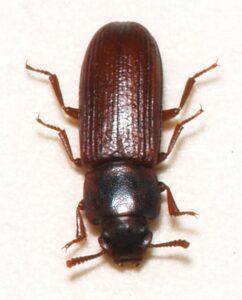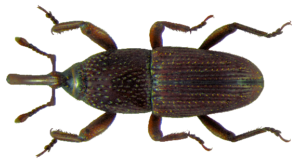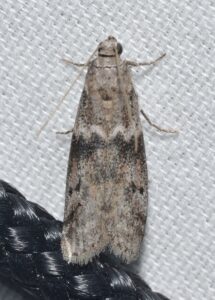Angoumois Grain Moth
General Description
- The adult is 5-7 mm yellow-brown. The forewings are narrow, pointed at both ends, and have black dots. The hind wings are gray and end in the shape of a finger.
- The larva is 5-7 mm long, cylindrical, red at hatching, and white when fully developed.
- The pupa is red or light brown.

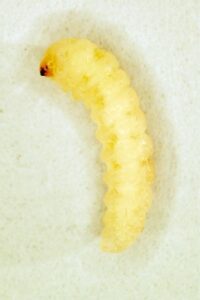
- Life Cycle and Common Characteristics
- The overwintering occurs at the caterpillar stage in cold regions (there is no overwintering in warm regions).
- Females lay eggs on grains individually or in groups between rows of corn or in cracks of wheat or barley grains or on wheat spikes in fields with a reddish-white color.
- The female lays 40-390 eggs.
- Incubation of eggs from 3-10 days in summer and 20-30 days in winter.
- The larva feeds on the contents of the bean and weaves silk threads, infecting the bean with one larva.
- There are 3 ages for the caterpillar (20-24 days).
- Pupa stage takes about 9-12 days.
- The adult insect lives 12 days in the summer and 28 days in the winter.
- The generation period is 5 weeks in the summer and 9-10 weeks in the winter.
- There are 5-6 generations per year
Damage and Economic
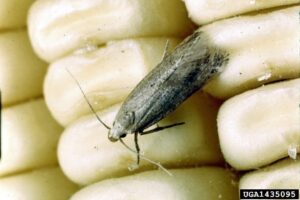
- It is frequently found on infected grains, and it is fast flying and moving insect.
- The larvae feed on the starchy materials inside the grain and weave silk threads around it, and the corn grain may lose 15-25% of its weight during the feeding of the larvae, and therefore they cause huge losses to the grain in the store. Also, the germination strength of the grain decreases and the value of flour decreases due to the abundance of feces and other insect parts.
- The grain is infested by one caterpillar (i.e., significant economic damage).


